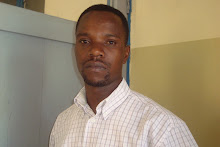
This is how the Mountain Kilimanjaro seen. No huge amount of snow anymore
By George Ramadhan.
As we have reached fourth day of internet training for Lake Zone Journalists, we took time to learn how to use internet for cross checking facts in order to flourish our articles before to print.
Also the trainer directed us how to use different website to search for information and write a well analytical stories where at the end of day four Peik Johanson (The Trainer) gave out the participants a practical assignment to write a feature story by using information found in different website as we learnt in the morning.
He provided at least six topics and asked the participants to choose one of them and write a feature story by using any useful website (s).
Myself I chose a topic about “Climate change and Mount Kilimanjaro” to construct my feature story. It was very interesting that when I checked with a participant sitting next to me
Victor Maleko I found he also chose the same topic to do his assignment. Down here’s my feature story.
IT is believed that the climax Mt. Kilimanjaro would be gone in 10 years to come if deliberately precaution measures should not be put in place to overcome the situation.
Economically the Mount Kilimanjaro attracting between 25,000 and 40,000 foreign and local tourists per year and sustains livelihood activities to at least four million people surrounding it from both countries Tanzania and Kenya through agricultural, tourism and other business undertakings.
According to an article written early this year by Tanzanian Journalist Apolinari Tairo and posted to
www.eturbonews.com, a team of Austrian scientists from University of Innsbruck predicted in 2007 that the plateau ice cap will be gone by 2020, but some ice on the slope will remain longer due to local weather conditions.
The loss of foliage causes less moisture to be pumped into the atmosphere, leading to reduced cloud cover and precipitation and increased solar radiation and glacial evaporation, reports show. In this complex interplay of nature and human actions, some ecological zones are expanding and others are shrinking.
The article also narrated that in 2002, a study led by Ohio State University ice core pale climatologist Lonnie Thomson predicted that ice on top of Africa’s tallest peak would be gone between 2015 and 2020 or few years later.
These and other many predictions came at the time when the world is experiencing a global warming which have created a lot of worries among people believing that there will be a big possibility of disappearing of some creations if the situation continuing for a long period to come.
Some of scientists and researchers believe that if current climatic conditions continue, the renowned glaciers, icing the peaks of Africa's highest peak for nearly 12,000 years, could be gone entirely by 2020.
"Just connect the dots. "If things remain as they have, in 15 years Kilimanjaro's glaciers will be gone." Observed Ohio State University Geologist Lonnie Thompson when talked to a reporter whose article found in
National Geographic website.
However there are different opinions from other people who have been quoted saying that, deforestation in the areas surrounding Mount Kilimanjaro, and not only global warming, might be among human influence on glacial recession.
"Clearing for agriculture and forest fires-often caused by honey collectors trying to smoke bees out of their hives-have greatly reduced the surrounding forests," said Douglas R. Hardy, a Climatologist at the University of Massachusetts in Amherst, who monitored Kilimanjaro's glaciers from mountaintop weather stations since 2000. He was talking to Andrea Minarcek a reporter with
National Geographic Adventure.
In a report “Climate change and Kilimanjaro” found at
www.climbmountkilimanjaro.com stated that of 19 square kilometers of glacial ice to be found on Africa, only 2.2 square kilometers can be found on Mount Kilimanjaro. Unfortunately, both figures used to be much higher.
According to the report, Kilimanjaro’s famous glaciers have shrunk by a whopping 82% since the first survey of the summit in 1912. Even since 1989, when there were 3.3 square kilometers, there has been a decline of 33%. At that rate, say the experts, Kilimajnaro will be completely ice-free within the next decade or two.
Telling about climatic change, a report by
Organization for Economic Co-operation and Development (OECD) has observed that less publicized and possibly far more significant impact of climate change on Mount Kilimanjaro is the intensification of fire risk and its attendant impacts on biodiversity as well as ecosystem services.
According to a report, in theory rising temperatures should result in the upward migration of vegetation zones, as observed in the Alps by GRABHERR & PAULI (1994). This effect however has been offset by the intensification of fire risk as a result of warmer temperatures and declining precipitation. This risk is particularly acute in the vast ericaceous belt in the upper reaches of the vegetation. Consequently, climatic changes have actually pushed the upper forest line downward on the Kilimanjaro.



